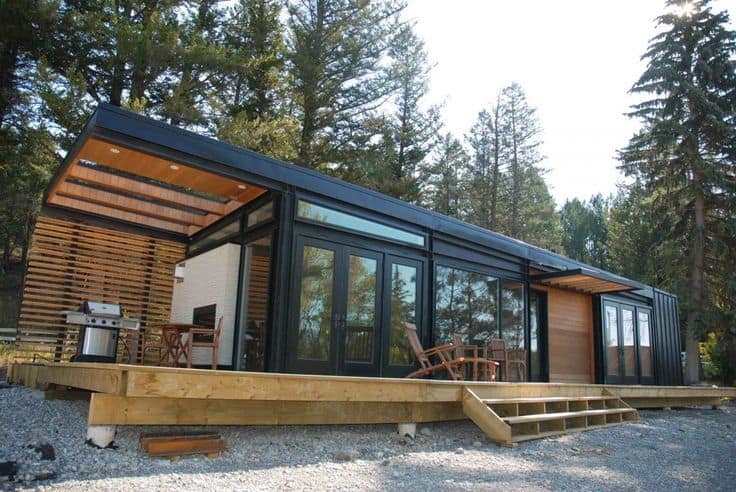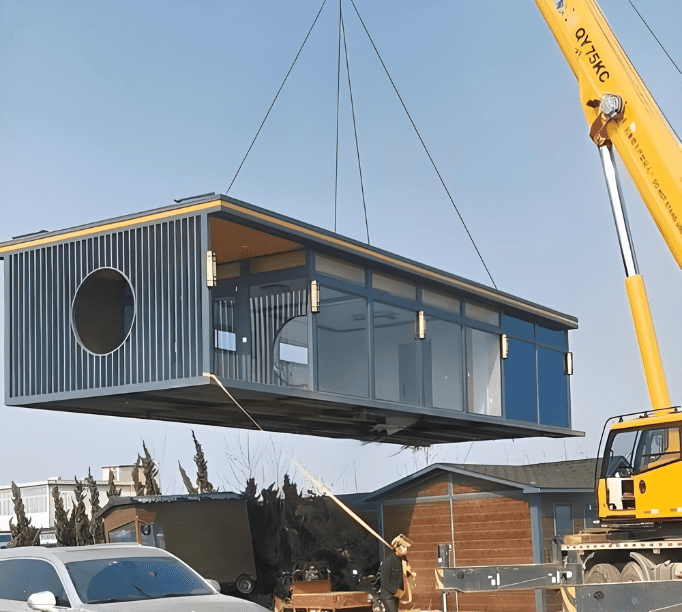You love your mobile home—but sometimes, it just doesn’t look like the kind of place you want to come home to. Maybe it feels too plain, too temporary, or just not “finished.” The good news? You don’t have to settle for that.
With the right upgrades—some big, some small—you can transform the exterior into something that looks and feels like a true house. In this guide, we’ll walk you through smart, realistic ways to make your mobile home feel more permanent, more polished, and more you.
Let’s turn that boxy outline into something beautiful—one step at a time.
What Makes a Mobile Home Look Like a “House”?
When you look at a traditional house, it feels solid, grounded, and complete. Mobile homes, on the other hand, often have a boxy shape, exposed skirting, and simple finishes that make them look temporary—even if they’ve been there for years.
The good news is: you don’t have to move or rebuild. With the right upgrades, you can change how your mobile home looks and feels—without changing its core structure. The key is knowing where the visual differences are, and how to close that gap.
So, what makes a mobile home look like a house?
First, the roofline. Most mobile homes have flat or gently sloped roofs, while traditional houses tend to have pitched or gabled roofs. That shape adds height and character.
Second, the exterior materials. Vinyl siding is common on mobile homes, but it often looks thin and repetitive. In contrast, houses use wood-look panels, textured finishes, or layered trim to create depth and variation.
Third, the finishing details. Real homes usually have framed doors, window trim, porches, and landscaping. These small touches add a sense of permanence and personality.
If your mobile home feels “unfinished” or too plain, it’s usually because one or more of these elements are missing or under-designed. That’s exactly where you can start making a change—and in the next sections, we’ll walk through how to do that, step by step.
Can I Change the Exterior Shape of My Mobile Home?
You step outside, look at your home, and something just feels… off. It’s not broken. It’s not ugly. But it doesn’t quite look like a house.
The biggest reason? Shape. Most mobile homes have flat walls, low roofs, and no real entry feature. From a distance, they look more like a long box than a real home.
But here’s the good part—you can change that. And you don’t have to tear anything down to do it. You just need to add structure in the right places.
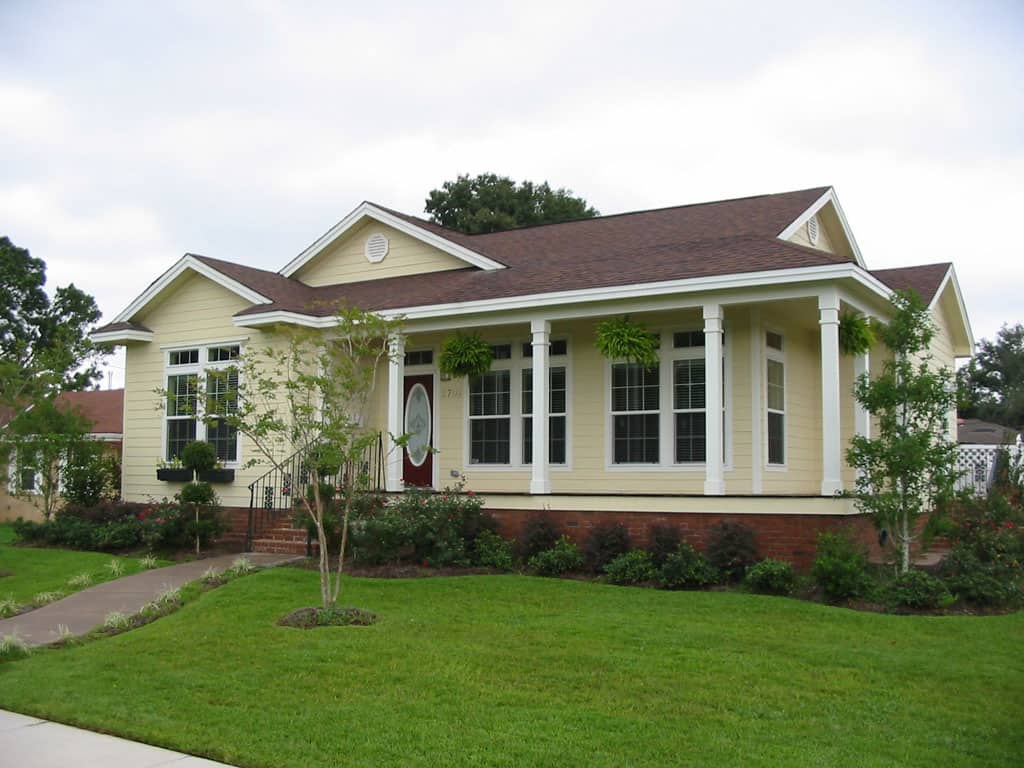
Let’s start with the most impactful change: the roofline.
A flat roof tends to make the whole home look like a trailer. Adding a pitched or false roof—even over just the front section—immediately makes it feel taller, more permanent, more like a real house. Many homeowners install a lightweight steel frame to support this without overloading the structure.
Next, think about the entryway.
Traditional houses often have a porch, a portico, or at least a covered step. If your mobile home has a simple door with no framing around it, the whole front looks unfinished. Building a front porch—even a small one—can completely change the home’s face. You can choose open-railed wood, or even modular steel frames for faster, cleaner installation.
Then there’s the side additions.
A house often has parts that stick out—bump-outs, covered patios, a carport. Mobile homes don’t, unless you build them. A modular side extension or steel-framed awning can break the boxy outline and make the structure feel more layered and natural.
Not every home needs all of these changes. Even just one—like a front porch or a roofline adjustment—can make a huge difference. The key is to focus on form, not just decoration. Give your mobile home more shape, and it will start to feel more like a house.
What Exterior Materials Make It Look More Like a House?
Even with the right shape, your home won’t look like a house if the surface still screams “mobile.” And that usually comes down to one thing: materials.
Most mobile homes use thin, flat vinyl siding. It’s cheap, lightweight, and easy to install—but it doesn’t add much character. From a distance, it often looks plasticky or too uniform.
To shift the look, you’ll need siding and skirting materials that give your home depth and texture. Think less “manufactured unit” and more “crafted home.”
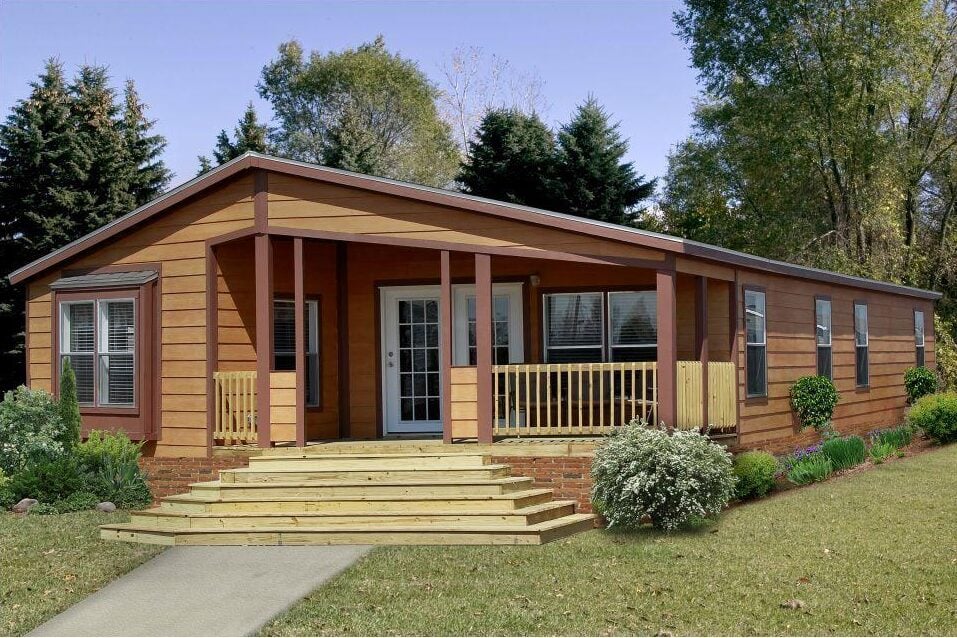
Here are some materials that make a big visual impact:
- Board and batten siding – Vertical lines create height and a classic farmhouse feel.
- Wood-look panels – These mimic real wood but are made from low-maintenance composite or fiber cement.
- Stone or brick veneer – Adds weight and a foundation-like appearance, especially along the bottom section or front face.
- Shiplap or lap siding – Horizontal boards help widen the visual profile, making it feel more grounded.
Don’t forget the skirting. This is the base area between the bottom of your home and the ground. Standard plastic panels often give away the mobile nature of the home. Upgrading to brick skirting, stone panels, or framed latticework can completely change how people perceive the house.
Also, framing your windows and doors makes a big difference. Adding trim—painted in a contrasting color—can give a clean, finished look that’s common on site-built homes.
In the end, it’s not about using expensive materials. It’s about picking ones that feel intentional, solid, and home-like. A little texture and variation can go a long way.
How Do I Add Character with Simple Finishing Touches?
Let’s say you’ve shaped the home and upgraded the siding—but something still feels flat. That’s where finishing touches come in. They don’t cost much, and they don’t require heavy tools, but they do something important: they give your home personality.
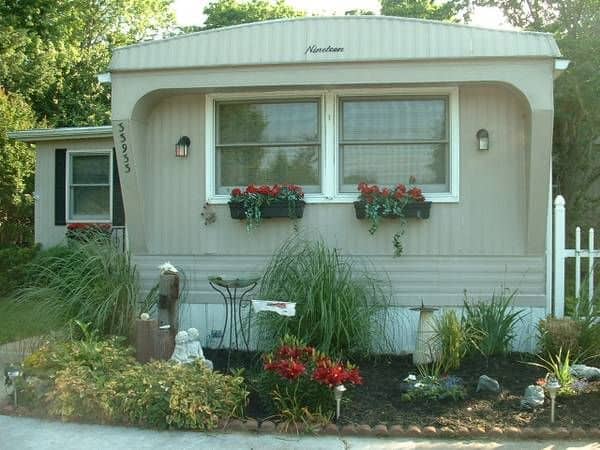
Start with paint. Not just any paint job—a thoughtful one. Houses often use a two- or three-tone scheme: a base color, a trim color, and maybe an accent. A soft gray body with crisp white trim and a bold navy door can turn a basic mobile home into something magazine-worthy. Don’t be afraid to go dark, either. A charcoal exterior with light trim can look modern and clean.
Now picture your front door. Is it plain? A bold color and a frame around it can give it presence. Add a small set of planters or a simple bench nearby, and suddenly that flat wall feels like an entrance.
Windows matter, too. Framing them with trim—even simple wood painted white—makes the whole structure feel more finished. Add shutters, even non-functional ones, and you’ve instantly got charm.
Then there’s lighting. A single, dim bulb by the door doesn’t say “welcome home.” But two wall-mounted lanterns or sconces can warm up the front, especially at night. If you add solar path lights along a walkway or even string lights across a porch, the home starts to glow.
Even the numbers on your house play a role. Swapping out faded plastic ones for clean metal or modern numbers is a ten-minute change with a big visual reward.
None of this requires construction. It’s about details. When your eye catches a clean trim line, a warm light, or a splash of color, it starts to feel less like a unit—and more like a place you’re proud to call home.
Can I Do It on a Budget or in Phases?
Absolutely. In fact, that’s how most people do it. You don’t have to turn your mobile home into a dream house overnight. You can take it step by step—and every step counts.
Where should I start if I can only afford one change?
Start with the front. That’s what you—and everyone else—see first. A small porch, new paint, or better lighting at the entry can shift the entire feel of the home, even if everything else stays the same for now.
What’s the best way to plan upgrades over time?
Think in layers. First, shape—like rooflines or entry structures. Next, surface—siding, skirting, and trim. Then, details—paint, lighting, landscaping. Doing it in that order helps each step build on the last, instead of clashing or feeling disconnected.
Is it possible to do some of this myself?
Definitely. Many finishing touches—like paint, house numbers, planters, or lighting—are DIY-friendly. Even installing window trim or skirting panels is doable with some basic tools. On the other hand, if you’re adding a roof or porch, it’s safer (and usually faster) to call a professional or use prefab components.
What if I have a tight budget right now?
Start small, but start smart. A few well-chosen upgrades can make your home feel very different without breaking the bank. And if you know you want to do more later, plan with that in mind. That way, each change supports the next one.
You’re not behind. You’re just getting started. And the best part is: every improvement, even the small ones, brings you closer to a home that truly feels like yours.
Do I Need Permits or Special Approvals?
It depends—but it’s important to find out before you start. Some changes to your mobile home are simple and don’t require any paperwork. Others might trigger local building codes or zoning rules.
So when do you need a permit?
As a general rule, you’ll likely need a permit if your upgrade:
- Changes the structural frame (like adding a porch or roof extension)
- Adds square footage or alters the footprint of the home
- Affects electrical, plumbing, or foundation systems
Painting your siding? Probably fine. Swapping out light fixtures or adding planters? No problem. But once you’re adding built structures or major attachments, you should always check with your local permitting office.
How do I check what’s allowed?
Start by calling or visiting your city or county building department. Ask about permits for mobile home upgrades—especially for porches, roofing changes, or permanent skirting. The rules can vary a lot depending on your area and whether the home is on private land or in a park.
If your mobile home is located in a park or community, check with the park manager as well. They may have their own guidelines, separate from city regulations.
What about inspections?
Some upgrades may require an inspection once complete, especially if they involve load-bearing structures or utilities. This isn’t something to fear—it’s just part of making sure the upgrade is safe and up to code.
Can a contractor help with this?
Yes. A good contractor or prefab supplier will often handle permitting for you, or at least provide the drawings and specs you need to get approval. If you’re working with modular components—like steel-framed porches or roof kits—ask if the system is pre-engineered to meet local codes.
Permits may feel like a hassle, but they protect your investment. They also ensure that when it’s time to sell, refinance, or insure your home, everything is in order. A little research upfront can save you big trouble later.
Mistakes to Avoid When Upgrading a Mobile Home Exterior
Upgrading your mobile home’s exterior is an exciting project—but it can also go wrong if you’re not careful. Here are a few common mistakes that people often make, and how you can avoid them:
1. Overloading the Structure
One of the biggest mistakes is adding too much weight or too many structural changes without considering the foundation. If you’re adding a large porch or heavy roof, make sure the base can handle it. Always consult a professional before starting major structural work.
2. Choosing the Wrong Materials
Not all materials are made for mobile homes. For example, heavy brick or stone without proper support can lead to damage. Use materials designed for mobile homes or modular structures, especially if you’re adding a porch or new roof.
3. Ignoring Ventilation
It’s easy to get caught up in looks, but neglecting proper airflow can lead to moisture issues. Make sure you maintain ventilation under your home, especially if you’re installing skirting or adding new features around the base. Without airflow, your mobile home can develop mold or rotting problems.
4. Failing to Plan for Future Upgrades
A common mistake is not thinking ahead. If you know you’ll eventually add a side extension or change the roofline, make sure your first upgrades don’t block future plans. For example, don’t attach a porch in a way that will interfere with a roof expansion.
5. Overdoing the Aesthetic Changes
Yes, the exterior is important—but don’t go overboard. Too many materials or contrasting colors can make your home look disjointed. Stick to a consistent style, whether it’s modern, rustic, or traditional. A clean, cohesive look will always be more attractive than one that feels “overdone.”
Taking time to avoid these mistakes will not only save you from headaches, but also ensure that your upgrades stand the test of time. With a little planning and care, your mobile home can look like a real house—inside and out.
One Step Closer to the Home You Want
Turning your mobile home into something that truly feels like a house doesn’t have to be overwhelming. You now know where to start, what matters most, and how to take it one step at a time—on your terms, and within your budget.
Every upgrade, no matter how small, brings you closer to a home that reflects you. It’s not about perfection. It’s about progress you can feel and see.
So take that first step. Paint the door. Add the trim. Plan the porch. You’ll be surprised how quickly it starts to feel different.
And if you ever need guidance—from materials to prefab options—we’re here to help you make it real.
Your home is already yours. Now, it can look like it too.
